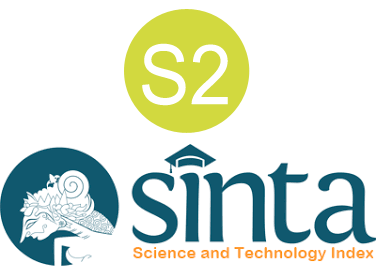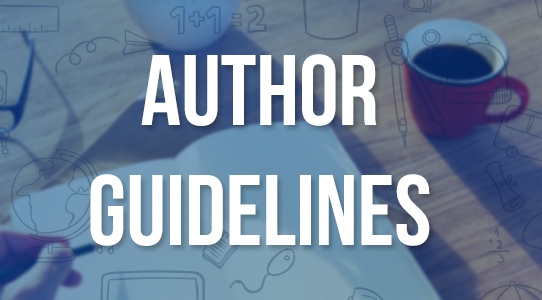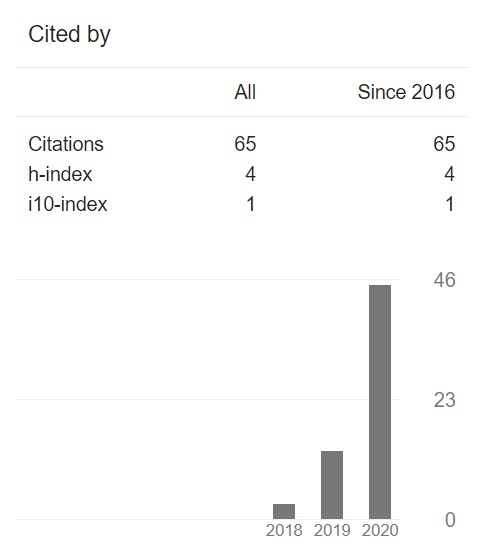The Use of AI in Elementary School Learning: A Systematic Literature Review
DOI:
https://doi.org/10.37680/qalamuna.v17i1.6761Keywords:
artificial intelligence, learning, primary school, educational technologyAbstract
This study systematically reviews the implementation of Artificial Intelligence (AI) in elementary education, focusing on the role of AI in enhancing teaching effectiveness, personalized learning, and student engagement. The research synthesizes various studies from the past decade to identify key AI technologies, the challenges faced, and the requirements for successful adoption in primary schools. The findings reveal that AI technologies, such as biosensors, voice recognition systems, and AI-powered platforms, significantly contribute to creating adaptive learning environments and providing real-time feedback, thus supporting personalized and experiential learning. However, the study also highlights challenges such as inadequate infrastructure, teacher competence, and ethical concerns regarding data privacy and algorithmic bias. Addressing these challenges requires investment in infrastructure, ongoing teacher training, and clear ethical guidelines to ensure equitable access to AI-driven learning. The study concludes that while AI holds great potential to transform primary education, its successful implementation depends on overcoming these barriers and fostering a culture of innovation within schools. The results offer practical recommendations for educators, policymakers, and technology developers to optimize AI use in primary schools, ensuring that it becomes an inclusive tool for enhancing educational outcomes.
Downloads
References
Alkan, A. (2024a). Artificial Intelligence: Its Role and Potential in Education. İnsan ve Toplum Bilimleri Araştırmaları Dergisi, 13(1), 483–497. https://doi.org/10.15869/itobiad.1331201
Alkan, A. (2024b). Artificial Intelligence: Its Role and Potential in Education. İnsan ve Toplum Bilimleri Araştırmaları Dergisi, 13(1), 483–497. https://doi.org/10.15869/itobiad.1331201
Arip Nurahman, & Pandu Pribadi. (2022a). Pemanfaatan Kecerdasan Buatan pada Media Pembelajaran Berbantuan Google Assistant. Jurnal Genesis Indonesia, 1(01), 24–32. https://doi.org/10.56741/jgi.v1i01.17
Arip Nurahman, & Pandu Pribadi. (2022b). Pemanfaatan Kecerdasan Buatan pada Media Pembelajaran Berbantuan Google Assistant. Jurnal Genesis Indonesia, 1(01), 24–32. https://doi.org/10.56741/jgi.v1i01.17
Bai, J. Y. H., Müskens, W., Zawacki-Richter, O., & Senyo Loglo, F. (2023). Prospects of artificial intelligence in education. ASCILITE Publications, 22–29. https://doi.org/10.14742/apubs.2023.534
Baidoo-Anu, D., & Owusu Anisah, L. (2023). Education in the Era of Generative Artificial Intelligence (AI): Understanding the Potential Benefits of ChatGPT in Promoting Teaching and Learning. Journal of AI, 7(1), 52–62. https://doi.org/10.61969/jai.1337500
Bakti, I. K., Zulkarnain, Yarun, A., Rusdi, Syaifudin, M., & Syafaq, H. (2023). The Role of Artificial Intelligence in Education: A Systematic Literature Review. Jurnal Iqra’ : Kajian Ilmu Pendidikan, 8(2), 182–197. https://doi.org/10.25217/ji.v8i2.3194
Busch, F., Adams, L. C., & Bressem, K. K. (2023). Biomedical Ethical Aspects Towards the Implementation of Artificial Intelligence in Medical Education. Medical Science Educator, 33(4), 1007–1012. https://doi.org/10.1007/s40670-023-01815-x
Chemlal, Y. (2023). Fostering sustainable Development Through Artificial Intelligence in Education (ESD): A Comprehensive Evaluation Framework and Key Criteria Analysis. https://doi.org/10.21203/rs.3.rs-3372485/v1
Chen, L., Chen, P., & Lin, Z. (2020). Artificial Intelligence in Education: A Review. IEEE Access, 8, 75264–75278. https://doi.org/10.1109/ACCESS.2020.2988510
Chiu, J. L., Fajardo, J. J., Lopez, P. N., Lourdes, J., & Miranda, F. (2020). The Effect of Employer Branding on Turnover Intention and Employee Satisfaction of the Utility Industry in the Philippines. Management Review: An International Journal, 15(2), 1–153.
Chiu, T. K. F., Moorhouse, B. L., Chai, C. S., & Ismailov, M. (2023). Teacher support and student motivation to learn with Artificial Intelligence (AI) based chatbot. Interactive Learning Environments, 1–17. https://doi.org/10.1080/10494820.2023.2172044
Ciolacu, M. I., Binder, L., & Popp, H. (2019). Enabling IoT in Education 4.0 with BioSensors from Wearables and Artificial Intelligence. SIITME 2019 - 2019 IEEE 25th International Symposium for Design and Technology in Electronic Packaging, Proceedings, 17–24. https://doi.org/10.1109/SIITME47687.2019.8990763
Ciolacu, M. L., Tehrani, A. F., Svasta, P., Tache, I., & Stoichescu, D. (2020). Education 4.0: An Adaptive Framework with Artificial Intelligence, Raspberry Pi, and Wearables-Innovation for Creating Value. 2020 IEEE 26th International Symposium for Design and Technology in Electronic Packaging, SIITME 2020 - Conference Proceedings, 298–303. https://doi.org/10.1109/SIITME50350.2020.9292148
Dogan, M. E., Goru Dogan, T., & Bozkurt, A. (2023). The Use of Artificial Intelligence (AI) in Online Learning and Distance Education Processes: A Systematic Review of Empirical Studies. Applied Sciences (Switzerland), 13(5), 3056. https://doi.org/10.3390/app13053056
Earp, J., Dagnino, F. M., & Ott, M. (2014). Learning through game making: An HCI perspective. Lecture Notes in Computer Science (Including Subseries Lecture Notes in Artificial Intelligence and Bioinformatics), 8514 LNCS(PART 2), 513–524. https://doi.org/10.1007/978-3-319-07440-5_47
Fahimirad, M., & Kotamjani, S. S. (2018). A Review on Application of Artificial Intelligence in Teaching and Learning in Educational Contexts. International Journal of Learning and Development, 8(4), 106. https://doi.org/10.5296/ijld.v8i4.14057
Fullan, M., Azorín, C., Harris, A., & Jones, M. (2024). Artificial intelligence and school leadership: Challenges, opportunities, and implications. School Leadership and Management, 44(4), 339–346. https://doi.org/10.1080/13632434.2023.2246856
Ghamrawi, N., Shal, T., & Ghamrawi, N. A. R. (2024). Exploring the impact of AI on teacher leadership: Regressing or expanding? Education and Information Technologies, 29(7), 8415–8433. https://doi.org/10.1007/s10639-023-12174-w
González-Calatayud, V., Prendes-Espinosa, P., & Roig-Vila, R. (2021a). Artificial intelligence for student assessment: A systematic review. Applied Sciences (Switzerland), 11(12), 5467. https://doi.org/10.3390/app11125467
González-Calatayud, V., Prendes-Espinosa, P., & Roig-Vila, R. (2021b). Artificial intelligence for student assessment: A systematic review. Applied Sciences (Switzerland), 11(12), 5467. https://doi.org/10.3390/app11125467
Harnawati, H., & Hidayati, U. (2024). Persepsi Mahasiswa Calon Guru Matematika terhadap Pemanfaatan Teknologi Kecerdasan Buatan dalam Konteks Pembelajaran. JagoMIPA: Jurnal Pendidikan Matematika Dan IPA, 4(1), 50–59. https://doi.org/10.53299/jagomipa.v4i1.389
Hooda, M., Rana, C., Dahiya, O., Rizwan, A., & Hossain, M. S. (2022). Artificial Intelligence for Assessment and Feedback to Enhance Student Success in Higher Education. Mathematical Problems in Engineering, 2022, 1–19. https://doi.org/10.1155/2022/5215722
Keung, E. Z., McElroy, L. M., Ladner, D. P., & Grubbs, E. G. (2020). Defining the Study Cohort: Inclusion and Exclusion Criteria (pp. 47–58). https://doi.org/10.1007/978-3-030-35488-6_5
Li, Q., Sorscher, B., & Sompolinsky, H. (2024a). Representations and generalization in artificial and brain neural networks. Proceedings of the National Academy of Sciences of the United States of America, 121(27). https://doi.org/10.1073/pnas.2311805121
Li, Q., Sorscher, B., & Sompolinsky, H. (2024b). Representations and generalization in artificial and brain neural networks. Proceedings of the National Academy of Sciences of the United States of America, 121(27). https://doi.org/10.1073/pnas.2311805121
Lim, L.-A., Dawson, S., Gašević, D., Joksimović, S., Pardo, A., Fudge, A., & Gentili, S. (2021). Students’ perceptions of, and emotional responses to, personalized learning analytics-based feedback: An exploratory study of four courses. Assessment & Evaluation in Higher Education, 46(3), 339–359. https://doi.org/10.1080/02602938.2020.1782831
Lukianets, H., & Lukianets, T. (2023). Promises and Perils of AI Use on the Tertiary Educational Level. Grail of Science, 25, 306–311. https://doi.org/10.36074/grail-of-science.17.03.2023.053
Marengo, A., Pagano, A., Pange, J., & Soomro, K. A. (2024). The educational value of artificial intelligence in higher education: A 10-year systematic literature review. Interactive Technology and Smart Education, 21(4), 625–644. https://doi.org/10.1108/ITSE-11-2023-0218
Mohamed Shaffril, H. A., Samsuddin, S. F., & Abu Samah, A. (2021). The ABC of systematic literature review: The basic methodological guidance for beginners. Quality & Quantity, 55(4), 1319–1346. https://doi.org/10.1007/s11135-020-01059-6
Noster, N., Hershkovitz, A., Tabach, M., & Siller, H. S. (2022). Learners’ Strategies in Interactive Sorting Tasks. Lecture Notes in Computer Science (Including Subseries Lecture Notes in Artificial Intelligence and Bioinformatics), 13450 LNCS, 285–298. https://doi.org/10.1007/978-3-031-16290-9_21
Pont-Niclòs, I., Echegoyen-Sanz, Y., Orozco-Gómez, P., & Martín-Expeleta, A. (2024). Creativity and artificial intelligence: A study with prospective teachers. Digital Education Review, 45, 91–97. https://doi.org/10.1344/der.2024.45.91-97
Ratnadewi, R., Andrianto, H., Saragih, R. A., Prijono, A., Sunoto, T. D., Susanthi, Y., & Jarden, J. J. (2023). Pelatihan Kecerdasan Buatan bagi Siswa-siswi SMKN-4 Bandung. AKM: Aksi Kepada Masyarakat, 4(1), 233–240. https://doi.org/10.36908/akm.v4i1.839
Rejeki, H. S., Purwanto, D., & Mentara, H. (2024). Pengembangan Model Pembelajaran Berbasis Permainan Untuk Meningkatkan Kebugaran Jasmani Siswa Sekolah Dasar. Journal of SPORT (Sport, Physical Education, Organization, Recreation, and Training), 8(2), 620–631. https://doi.org/10.37058/sport.v8i2.11007
Sadykova, G., & Kayumova, A. (2024a). Educators’ Perception of Artificial Intelligence as Instructional Tool. TEM Journal, 13(4), 3194–3204. https://doi.org/10.18421/TEM134-54
Sadykova, G., & Kayumova, A. (2024b). Educators’ Perception of Artificial Intelligence as Instructional Tool. TEM Journal, 13(4), 3194–3204. https://doi.org/10.18421/TEM134-54
Schleiss, J., Laupichler, M. C., Raupach, T., & Stober, S. (2023). AI Course Design Planning Framework: Developing Domain-Specific AI Education Courses. Education Sciences, 13(9), 954. https://doi.org/10.3390/educsci13090954
Seo, K., Tang, J., Roll, I., Fels, S., & Yoon, D. (2021). The impact of artificial intelligence on learner–instructor interaction in online learning. International Journal of Educational Technology in Higher Education, 18(1). https://doi.org/10.1186/s41239-021-00292-9
Suharyo, S., Subyantoro, S., & Pristiwati, R. (2024a). Kecerdasan Buatan dalam Konteks Kurikulum Merdeka pada Jenjang Pendidikan Dasar dan Menengah: Membangun Keterampilan Menuju Indonesia Emas 2045. Humanika, 30(2), 208–217. https://doi.org/10.14710/humanika.v30i2.60563
Suharyo, S., Subyantoro, S., & Pristiwati, R. (2024b). Kecerdasan Buatan dalam Konteks Kurikulum Merdeka pada Jenjang Pendidikan Dasar dan Menengah: Membangun Keterampilan Menuju Indonesia Emas 2045. Humanika, 30(2), 208–217. https://doi.org/10.14710/humanika.v30i2.60563
Sun, Y. (2020). Analysis of Impulsive Buying Behavior in Live Broadcast Scenarios. Education Reform and Development. https://doi.org/10.26689/erd.v2i2.2135
Syarifuddin, S., Nufus, M. S., Sasoko, W. H., Zukhruf, A., Ramdan, F., Rosnani, R., & Kurnia, A. (2024). Analisis Tingkat Keterampilan Guru Sekolah Dasar di Kota Bima dalam Pengembangan Pembelajaran Berbasis Media Interaktif. Jurnal Pendidikan Dan Pembelajaran Indonesia (JPPI), 4(1), 35–48. https://doi.org/10.53299/jppi.v4i1.387
Tolentino, R., Baradaran, A., Gore, G., Pluye, P., & Abbasgholizadeh-Rahimi, S. (2024). Curriculum Frameworks and Educational Programs in AI for Medical Students, Residents, and Practicing Physicians: Scoping Review. JMIR Medical Education, 10, e54793. https://doi.org/10.2196/54793
Viktorova, L., & Mamchur, K. (2021). The Use of Artificial Intelligence for Arabic Learning. Priority Areas for Development of Scientific Research: Domestic and Foreign Experience. https://doi.org/10.30525/978-9934-26-049-0-16
Yang, L., Zhang, H., Shen, H., Huang, X., Zhou, X., Rong, G., & Shao, D. (2021). Quality Assessment in Systematic Literature Reviews: A Software Engineering Perspective. Information and Software Technology, 130, 106397. https://doi.org/10.1016/j.infsof.2020.106397
Yusuf, Azizah, N. L., Suci, T. P., & Walida, S. El. (2024). Implementasi Pembelajaran Berbasis Artificial Intelligence Melalui Media Canva Pada Calon Guru Matematika. Jurnal Pengabdian Kepada Masyarakat Bersinergi Inovatif, 1(2), 101–108. https://doi.org/10.61674/jpkmbi.v1i2.154
Zawacki-Richter, O., Marín, V. I., Bond, M., & Gouverneur, F. (2019). Systematic review of research on artificial intelligence applications in higher education – where are the educators? International Journal of Educational Technology in Higher Education, 16(1), 39. https://doi.org/10.1186/s41239-019-0171-0
Zhang, Q., Lin, S., Liu, J., & Jin, Y. (2022). A game perspective on collaborative learning among students in higher education. Cogent Education, 9(1), 2115617. https://doi.org/10.1080/2331186X.2022.2115617
Downloads
Published
How to Cite
Issue
Section
License
Authors who submit manuscript retain its copyright and grant publisher right of first publication licensed under a Creative Commons Attribution-ShareAlike 4.0 International License (CC BY-SA 4.0) that allows others to access (search, read, download, and cite), share (copy and redistribute the material in any medium or format) and adapt (remix, transform, and build upon any material) the work for any lawful purpose, even commercially with an acknowledgement of the work's authorship and initial publication in Qalamuna: Jurnal Pendidikan, Sosial, dan Agama.












